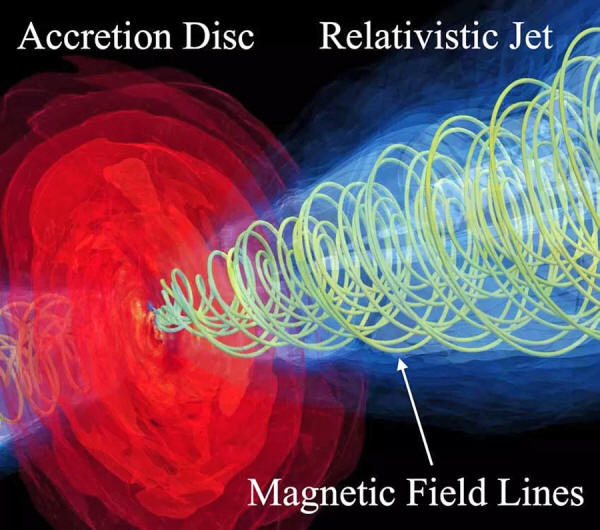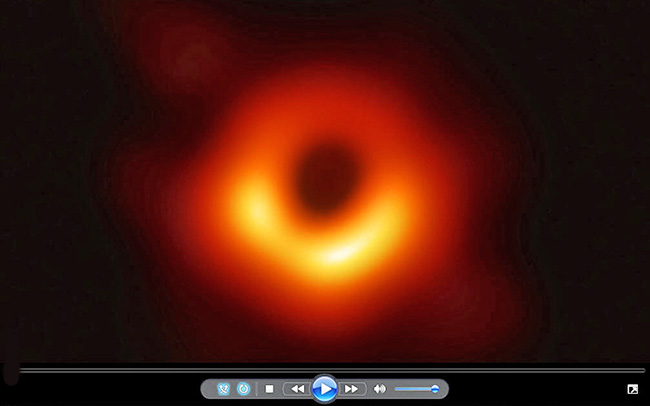|

by Chelsea Gohd
November 09,
2021
from
Space Website

A new study published Nov. 4 2021
created
a computer model of
the
Black Hole M87.
(Image credit: Alejandro Cruz-Osorio,
Goethe University Frankfurt)
The first (and only)
Black Hole to ever have its
snapshot taken from Earth shoots out vast jets of plasma that travel
near the speed of light, new computer models show.
The Black Hole is located 55 million light-years from Earth in the
Virgo constellation lies the galaxy
Messier 87, or M87, which harbors a
Black Hole 6.5 billion times the mass of our sun at its core.
In 2019, an international
research collaboration called the Event Horizon Telescope (EHT)
imaged the Black Hole, the first-ever image of its kind.
The Black Hole in M87 shoots a relativistic jet, or a plasma jet,
outwards at close to the speed of light.
In a new study, an
international team of researchers have gleaned new insights about
the Black Hole and its jet by modeling it in incredible detail with
computers.

The team used
three-dimensional supercomputer simulations to model the region of
the M87 Black Hole and its accretion disk, a disk of gas, plasma and
various particles that surrounds and feeds a Black Hole.
They took into account
temperatures, matter densities and magnetic fields that are likely
to exist with this Black Hole based on existing observations.
This helped the researchers create a computer model of the Black
Hole region, which they used to track and study the movement of
photons, or light particles, in the Black Hole's jet.
They then translated this
photon tracking data from the computer model into radio images and
compared it with real-life observations of the Black Hole.
They found that their computer model matched well against real-life
data collected by radio telescopes and satellites, giving confidence
that their model was a fairly accurate representation of the Black
Hole region.
"Our theoretical
model of the electromagnetic emission and of the jet morphology
of M87 matches surprisingly well with the observations in the
radio, optical and infrared spectra," the study's lead author
Alejandro Cruz-Osorio of the Institute of Theoretical Physics at
Goethe University,
said in a statement.
Now, while researchers
have been able to study and observe the Black Hole in M87
(especially thanks to the image created in 2019) questions still
remain about how such a powerful relativistic jet comes to be and
how it remains stable, shooting across immense distances in space.
According to Alejandro Cruz-Osorio, the data collected about
the Black Hole's jet from their computer model shows how the jet
might work.
It "tells us that the
supermassive Black Hole
M87* is probably highly rotating and
that the plasma is strongly magnetized in the jet, accelerating
particles out to scales of thousands of light-years," he said.
Co-author Luciano
Rezzolla, also a researcher at the Institute for Theoretical
Physics at Goethe University, added that, in addition to
advancing our understanding of the M87 Black Hole, the team's radio
images the computer simulation are in line with predictions made by
Einstein's theory of general relativity.
"The fact that the
images we calculated are so close to the astronomical
observations is another important confirmation that Einstein’s
theory of general relativity is the most precise and natural
explanation for the existence of supermassive Black Holes in the
center of galaxies," Rezzolla said.
"While there is still
room for alternative explanations, the findings of our study
have made this room much smaller."
This work (State-of-the-art
Energetic and Morphological modeling of the Launching site of the
M87 Jet) was published
November 4 in the journal Nature Astronomy.
|



